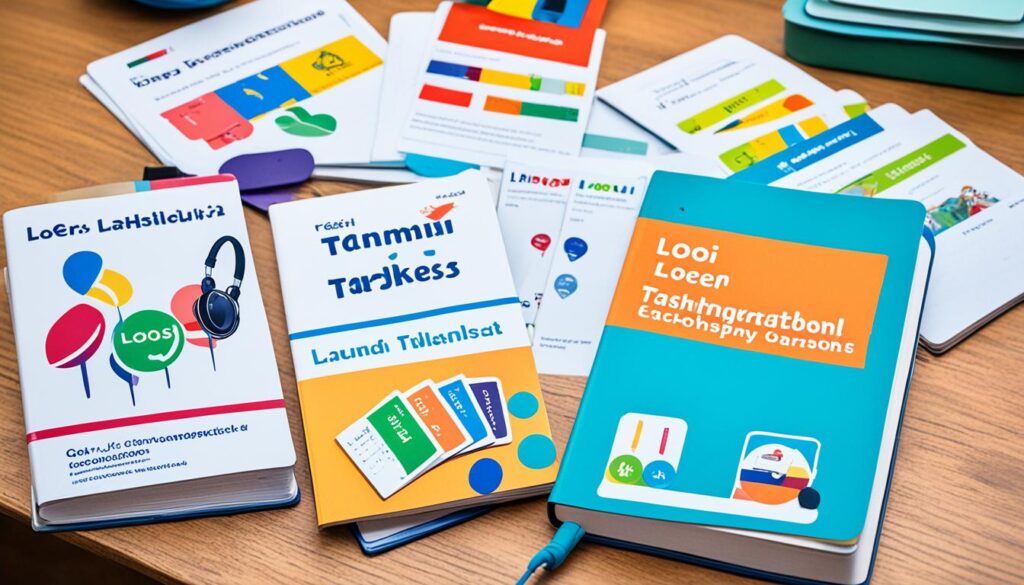Did you know that the Loei Language, also known as the Loei dialect, holds great cultural significance for the local communities in the Loei Province of Thailand? This linguistic variety, with its distinct features and rich heritage, serves as a vital link to the traditions and customs of the region.
While Thailand is known for its diverse tapestry of languages, the Loei Language stands out with its unique vocabulary, pronunciation, and grammar. Spoken primarily by the local population in Loei, this dialect adds yet another layer of linguistic richness to the country.
In this article, we will delve into the history, features, and cultural significance of the Loei Language. Join us as we explore the efforts made by the community to preserve and promote this remarkable dialect. Whether you are a language enthusiast or simply curious about Thai culture, prepare to be captivated by the fascinating world of the Loei Language.
History of the Loei Language
The Loei Language boasts a fascinating history that dates back to the Kingdom of Yonok Chiang Saen. Originating from this ancient Kingdom, the language has witnessed the influence of various Thai tribes as they migrated to the Loei Province over time. These tribes have played a significant role in shaping the development and evolution of the Loei Language, infusing it with unique characteristics that distinguish it from other Thai dialects.
In recent years, there has been a growing recognition of the need to preserve and promote the Loei Language. Efforts have been made to ensure the survival of this linguistic treasure for future generations. Local communities, language enthusiasts, and cultural organizations have come together to actively engage in language preservation initiatives, striving to safeguard the Loei Language’s rich heritage.
A visual representation of the rich history and cultural significance of the Loei Language.
Preserving the Loei Language is not only vital for linguistic diversity but also for the preservation of local traditions, customs, and folklores deeply rooted in Loei Province.
The Loei community’s collective efforts to preserve their language have led to the implementation of language documentation projects, revitalization programs, and the organization of cultural events. These endeavors not only celebrate the unique identity of the Loei Language but also emphasize its cultural significance. The community’s commitment to fostering language awareness and engagement plays a crucial role in ensuring the continued existence and vitality of the Loei Language.
| Efforts for Loei Language Preservation | Impact |
|---|---|
| Language documentation projects | Preserving and archiving valuable linguistic resources |
| Revitalization programs | Reintroducing and promoting the use of the Loei Language |
| Cultural events | Creating platforms for language immersion and cultural exchange |
| Community initiatives | Encouraging language learning and cultivation of language pride |
The collective efforts of these endeavors contribute to the preservation and dissemination of the Loei Language, ensuring its enduring legacy within the Loei community and beyond. By celebrating and cherishing their linguistic heritage, the Loei community serves as custodians of their unique cultural identity, fostering a sense of belonging and pride among its speakers.
Features of the Loei Language
The Loei Language, spoken primarily by the local population in Loei, Thailand, is known for its unique vocabulary, pronunciation, and grammar. While it shares similarities with other Thai dialects, it also boasts distinct features that make it stand out. Let’s take a closer look at some of the prominent features of the Loei Language.
Unique Vocabulary
The Loei Language showcases a rich and diverse vocabulary that reflects the cultural heritage of the Loei Province. It includes words and expressions specific to the local traditions, environment, and ways of life. These linguistic nuances contribute to the vibrancy and authenticity of the language, allowing speakers to convey their thoughts and experiences with precision and depth.
Pronunciation Variations
The Loei Language exhibits certain pronunciation variations compared to standard Thai or other regional dialects. These variations reflect the regional accents and speech patterns of the local population. Different generations and social groups within Loei may pronounce certain words or sounds uniquely, adding a colorful and dynamic aspect to the language.
Grammatical Peculiarities
Loei Language’s grammar features distinct patterns and structures that differentiate it from other Thai dialects. These grammatical peculiarities contribute to the uniqueness and character of the language. For example, the arrangement of sentence components or the use of certain grammatical markers may vary from standard Thai, creating a distinctive linguistic identity for the Loei Language.
“The Loei Language’s vocabulary, pronunciation variations, and grammatical peculiarities illustrate the rich cultural tapestry and linguistic diversity of the Loei Province. Its unique features make it a fascinating area of study for linguists and an invaluable treasure for the local community.”
To gain a better understanding of the features of the Loei Language, let’s explore a comparison of some common words and phrases between the Loei dialect and standard Thai:
| English | Loei Language | Standard Thai |
|---|---|---|
| Good morning | Laew khun | Sawatdee |
| Thank you | Khawp jai | Khop khun |
| I love you | Ruk khun | Phom rak khun |

Cultural Significance of the Loei Language
The Loei Language holds great cultural significance for the people of Loei. It is not just a means of communication, but also a key element in preserving the local traditions, customs, and folklores. The community takes immense pride in their language and is actively involved in efforts to promote its usage and raise awareness.
Through the Loei Language, the community is able to express their unique cultural identity and showcase their rich heritage. It serves as a tool for storytelling, passing down traditional knowledge, and fostering a sense of belonging among the locals.
“The Loei Language is the heart and soul of our community. It connects us to our ancestors, strengthens our bond, and keeps our cultural practices alive,” says Nongluk, a resident of Loei Province.
The language acts as a medium to preserve and transmit indigenous knowledge that is deeply rooted in the local environment, including agricultural practices, craftsmanship, and spiritual beliefs. It embodies the collective wisdom of generations and offers valuable insights into the history, geography, and social fabric of the Loei Province.
| Points of Cultural Significance | Examples |
|---|---|
| Oral Tradition | Legends, folktales, and proverbs passed down through generations. |
| Ceremonial Practices | Religious rituals, traditional ceremonies, and festive events. |
| Local Art Forms | Traditional music, dance performances, and visual arts. |
| Cultural Identity | Expressions of belonging, sense of community, and shared values. |
The Loei community recognizes the importance of their language in preserving their cultural heritage. Efforts are underway to document and revitalize the language, with initiatives such as language schools, cultural centers, and community-led projects that aim to support language preservation and promote bilingual education.
By embracing and celebrating the Loei Language, the community showcases their commitment to cultural diversity and empowers future generations to embrace their heritage.
Resources for Learning the Loei Language
If you’re interested in learning the Loei Language, there are a variety of resources available to support your language journey. Whether you prefer traditional classroom settings, cultural immersion experiences, or online platforms, you’ll find options that cater to your learning style and needs.
Local Language Schools
Local language schools in the Loei Province offer courses specifically tailored to help learners understand and communicate in the Loei dialect. These schools employ experienced instructors who are native speakers of the language and provide comprehensive language programs for students of all skill levels.
Cultural Centers
Loei is home to cultural centers that celebrate the rich heritage and diversity of the local communities. These centers often offer language classes and workshops focused on the Loei Language, allowing learners to immerse themselves in the language, culture, and traditions of the region.
Online Platforms
If you prefer the flexibility of online learning, there are several platforms available that offer Loei Language courses and resources. These online resources provide interactive lessons, language materials, and opportunities for practice and engagement with fellow learners, making it convenient to learn the Loei dialect from anywhere in the world.
Table: A Comparison of Loei Language Learning Resources
| Resource | Description |
|---|---|
| Local Language Schools | Offer in-person classes with experienced native-speaking instructors |
| Cultural Centers | Provide cultural immersion experiences and language workshops |
| Online Platforms | Offer flexible learning options with interactive lessons and practice opportunities |
Whether you choose to learn in a classroom or through online platforms, the resources available for learning the Loei Language aim to foster language preservation and cultural exchange. Take advantage of these resources to gain a deeper understanding of the Loei dialect and connect with the vibrant local community.

Loei Language Preservation Efforts
The Loei community takes great pride in preserving their unique language and cultural heritage. Various local organizations, educational institutions, and community initiatives have come together to support and promote the preservation of the Loei Language.
One of the key efforts is language documentation, where linguists and community members work together to record and analyze the vocabulary, grammar, and pronunciation of the Loei Language. This documentation helps create a valuable resource for future generations to understand and learn the language.
Revitalization programs are another crucial aspect of the preservation efforts. These programs focus on teaching the Loei Language to younger generations and encouraging its usage in daily life. Language schools and cultural centers play a central role in providing classes, workshops, and resources for individuals interested in learning the Loei Language.
| Preservation Efforts | Impact |
|---|---|
| Language documentation | Creates a valuable linguistic resource for future generations. |
| Revitalization programs | Preserves and promotes the usage of the Loei Language in daily life. |
In addition to documentation and revitalization, the Loei community organizes cultural events and festivals that showcase the language and its significance. These events not only celebrate the Loei Language but also raise awareness among locals and visitors about its importance and the need for its preservation.
“The preservation of the Loei Language is not just about maintaining a linguistic heritage. It is about preserving our cultural identity, traditions, and unique way of life. The language connects us to our ancestors and defines who we are as a community.” – A community elder
The collective efforts of the Loei community, along with government support, have contributed significantly to the continued existence and vitality of the Loei Language. However, challenges such as urbanization, migration, and cultural shifts continue to pose threats to its preservation. It is an ongoing process that requires continuous efforts and active participation from the community and beyond.
Community Engagement in Language Preservation
The success of Loei language preservation efforts largely depends on community engagement. Local residents actively participate in language-related activities, join language classes, and share their linguistic knowledge with younger generations. The Loei community recognizes the value of their language and strives to pass it on to future generations. Together, they are keeping the Loei Language alive and thriving.
Conclusion
The Loei Language is an integral part of Thailand’s linguistic heritage, known for its unique features and cultural significance. The local community’s dedication to preserving and promoting the Loei Language is commendable, with their efforts ensuring its continued vitality and contributing to the cultural diversity of the Loei Province.
Through various language preservation initiatives and community-driven endeavors, the Loei Language thrives as a means of communication and a symbol of local identity. The commitment of individuals, organizations, and educational institutions in documenting, revitalizing, and promoting the Loei Language reflects the strong sense of pride and connection to the region’s rich linguistic and cultural heritage.
The Loei Language community efforts play a pivotal role in safeguarding this unique dialect for future generations. By creating resources, offering language courses, and organizing cultural events, they foster language awareness, linguistic exchange, and a deeper understanding of the local traditions and customs associated with the Loei Language.
Preserving the Loei Language is not only a testament to the community’s dedication, but it also ensures the preservation of a piece of Thailand’s cultural mosaic. The Loei Language serves as a bridge between the past and the future, connecting generations and preserving the unique linguistic and cultural heritage of the Loei Province in the ever-changing world.
FAQ
What is the Loei Language?
The Loei Language, also known as the Loei dialect, is a unique linguistic variety spoken in the Loei Province of Thailand. It has its own distinct features that set it apart from other Thai dialects.
What is the history of the Loei Language?
The Loei Language has a deep-rooted history and is believed to have originated from the Kingdom of Yonok Chiang Saen. Over time, various Thai tribes migrated to the Loei Province, contributing to the development of the language. Efforts have been made to preserve and promote the Loei Language to ensure its survival for future generations.
What are the features of the Loei Language?
The Loei Language is characterized by its unique vocabulary, pronunciation, and grammar. It shares similarities with other Thai dialects but also has distinct features. The language is primarily spoken by the local population in Loei, and its usage varies depending on age and social context.
What is the cultural significance of the Loei Language?
The Loei Language holds great cultural significance for the people of Loei. It not only serves as a means of communication but also plays a vital role in preserving the local traditions, customs, and folklores. The community takes pride in their language and actively engages in efforts to promote its usage and awareness.
Are there resources available for learning the Loei Language?
Yes, there are various resources available for individuals interested in learning the Loei Language. Local language schools, cultural centers, and online platforms offer courses, materials, and resources to help learners understand and communicate in the Loei dialect. These resources aim to foster language preservation and cultural exchange.
What are the preservation efforts for the Loei Language?
The Loei community is actively involved in preserving their language and cultural heritage. Local organizations, educational institutions, and community initiatives support language documentation, revitalization programs, and cultural events. These efforts play a crucial role in ensuring the continued existence and vitality of the Loei Language.
What is the significance of the Loei Language community’s efforts?
The Loei Language is an integral part of Thailand’s linguistic heritage, with its own unique features and cultural significance. The local community’s dedication to preserving and promoting the Loei Language is commendable. Through their efforts, the language continues to thrive and contribute to the cultural diversity of the Loei Province.
